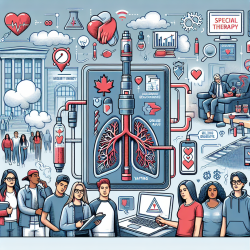Understanding Embodied Cognition in Online Therapy
The theory of embodied cognition suggests that our cognitive processes are deeply rooted in the body's interactions with the environment. This concept is particularly relevant for online therapy services like those provided by TinyEYE, where understanding the neuroanatomical basis of embodied cognition can enhance therapeutic outcomes.
The Research at a Glance
A recent study titled A neuroanatomical examination of embodied cognition: semantic generation to action-related stimuli explores the shared and unique brain activations involved in semantic generation and motor tasks. Using fMRI, researchers discovered that brain regions activated during motor tasks are also active when individuals engage in semantic generation tasks related to action-related stimuli.
Key Findings and Implications
- Somatotopic Organization: The study found that the parietal-frontocentral network (PFN) is organized somatotopically, meaning that specific brain regions are activated depending on whether the stimulus involves the hand or foot.
- Shared Activation: There is significant overlap in brain activation between motor tasks and semantic generation tasks, supporting the theory that cognitive processes are grounded in sensorimotor experiences.
- Stimulus Format Differences: The research also highlights that pictures and words activate both shared and unique brain regions, indicating that different formats access semantic knowledge differently.
Applying Research to Practice
For practitioners in online therapy, these findings offer valuable insights. By integrating action-related stimuli into therapy sessions, therapists can potentially enhance cognitive engagement and facilitate better learning outcomes. Consider incorporating activities that require clients to verbally generate action-related information, thereby engaging the sensorimotor systems.
Moreover, understanding the differences in how pictures and words are processed can guide the selection of therapeutic materials. Tailoring activities to leverage the unique strengths of each format could lead to more effective interventions.
Encouraging Further Exploration
While this study provides a foundational understanding of embodied cognition, there is ample opportunity for further research. Practitioners are encouraged to explore how these principles can be applied in diverse therapeutic contexts and with different populations. By doing so, they can contribute to a growing body of knowledge that bridges neuroscience and practical therapy applications.
To read the original research paper, please follow this link: A neuroanatomical examination of embodied cognition: semantic generation to action-related stimuli.










